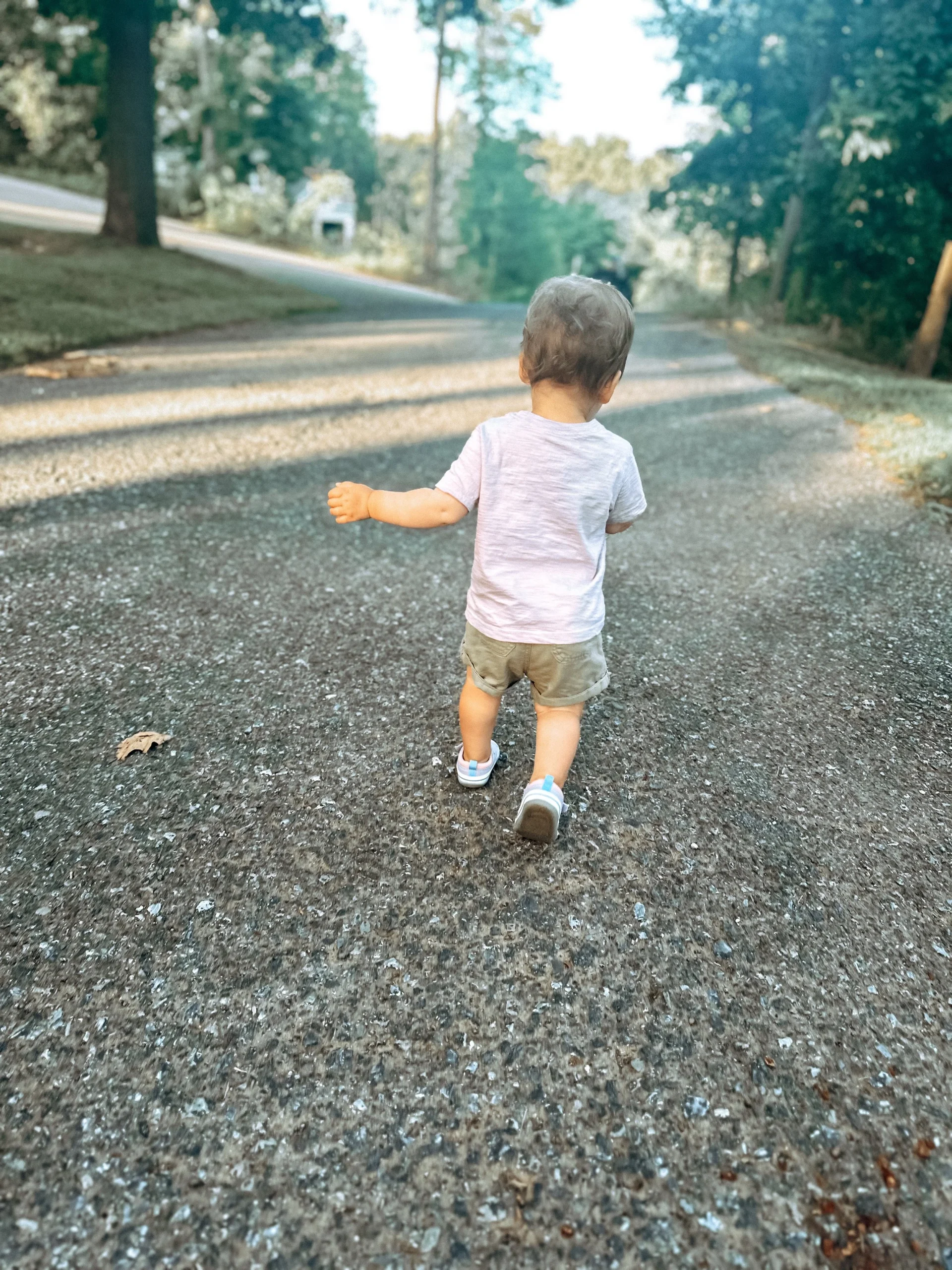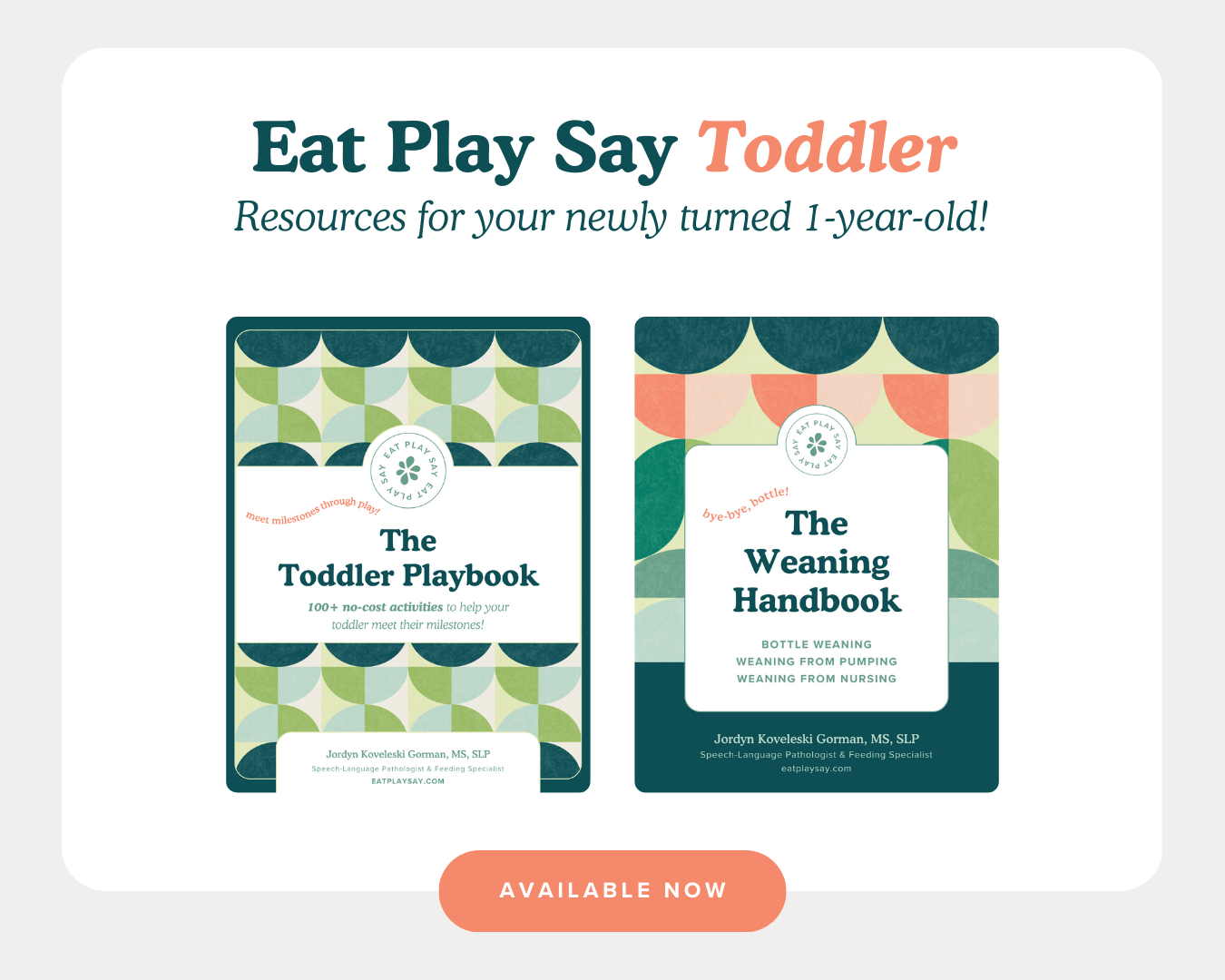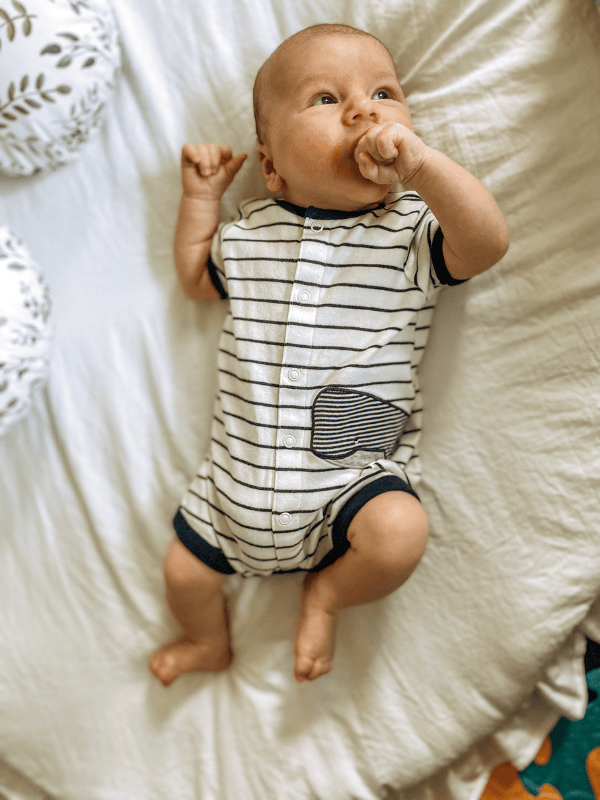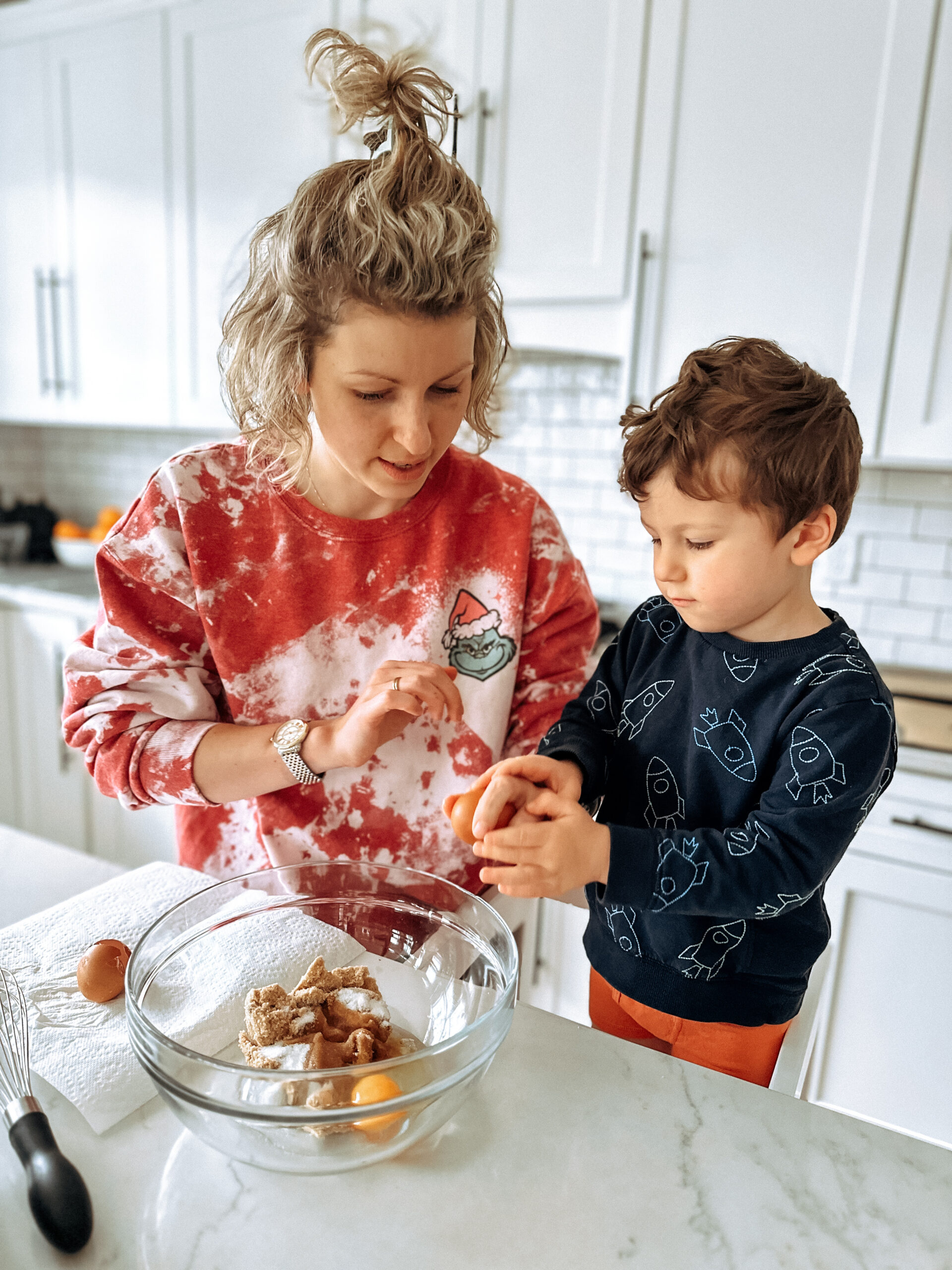This page contains affiliate links. We will receive a commission on qualifying purchases using these links.
Calling in the Eat Play Say Physical Therapist for help with this one!
Your baby is likely crawling everywhere (if not, pause and check out this blog for more information). You finally got all the outlets covered and cabinets secured. You’re getting ready to celebrate (or just celebrated) your baby’s first birthday. Next up, walking.
Many babies take their first steps between 9 and 18 months.
That’s a HUGE range, you say? Well…walking is a HUGE deal. It’s one of those milestones that requires a lot of pieces to come together in order to happen. And at the same time, your baby is growing, saying their first words, weaning from breastmilk or formula, eating more solids, and sleeping longer stretches. They have a lot going on!
Once your baby is able to crawl on hands and knees, pull to stand, stand without support for a few seconds, and walk with hands held or a push toy, you can bet their first independent steps are right around the corner.
{If your baby is showing no signs of trying to pull to stand by 9-10 months, or you see no progress towards walking within 2 months of pulling to stand (or no movement towards walking by 15 months at the latest), it’s time to look into an evaluation so your baby doesn’t fall behind. You can talk to a pediatric professional in just a few days here.}
Here are some great ways to play to encourage those first steps:
-
Break out the bubbles! – A favorite activity for so many reasons. Great for working on speech (“pop, bubbles, more”), fine motor (finger isolation!), and gross motor development (chasing bubbles!). Grab your favorite bubble wand, gun or machine and let the bubbles do the heavy lifting. While your baby is standing at a stable surface, blow the bubbles up in the air far enough away that they might want to let go to reach and pop the bubbles! This will encourage independent standing and maybe even a step or two.
-
Walk to mama or dada (or whoever else is around!) – A classic “game” of walking from one parent/caregiver to the other or from the couch/wall to a parent/caregiver. Stand your baby up independently, step back a few steps, and call their name (or hold their favorite toy). Reach out your hands to encourage them to take a step or two. Don’t get too far away at first because you want to build their confidence (and strength!) so you don’t discourage them.
-
Fill up your baby’s hands – When working on standing, give your baby two toys to hold – egg shakers, small balls or mini stuffed animals work great! Encourage them to bring them to you, put them in a basket, or just have a dance party. Since their hands are full, they won’t be able to grab onto anything for support and might just take a few steps!
-
Use a push toy or shopping cart – You will have to help your baby to control, steer, and propel the push toy at first, but soon they’ll get the hang of it. Block off any stairs with a secure baby gate and keep your baby out of the kitchen when you’re cooking. Set up some wide open space for them to roam. Sometimes it’s easier to start on carpet so they don’t go so fast, but they’ll be zooming around on the hard floors in no time. Put some heavier toys in the shopping cart so it doesn’t tip or get away from your baby.
-
Take it outside – Pull out the water table, little slide or even the bubbles and work on standing and walking in the grass. Your baby can work on stand-squat-stand and cruising at the water table. The slide encourages reciprocal leg movement when going up the steps. The grass is a more unstable surface (but still cushions those falls!) to practice balance.
Our Favorite Walking Toys
Looking for ways to help your little one reach their next milestone? Here are some Physical Therapist approved toys for working on walking!
-
Activity Cube: Work on pulling to stand, cruising around to play with the different parts of the cube, and letting go with one or both hands to play while standing.
-
Push Walker: What better way to work on walking than actually walking? (hint: there is none). Plus, this one doubles as a toy for sitting and standing play.
-
Balance Bike: Great to work on reciprocal leg movement and balance, of course!
-
Ride-On Train: Work on stand-squat-stand to pick up the letter blocks and drop them in the train. Use it as a ride-on or a push walker!
-
Cardboard Blocks: Stack up to work on squat to stand, kick towers over to work on single leg balance, or make a path to walk through with a push toy or hand held assistance.
-
Shopping Cart or Doll Stroller: Better for more experienced walkers because many of them are lightweight and can tip, but they are great for pushing around toys and dolls and cleaning up! Weigh them down with some heavier toys if needed.
Some things to avoid:
-
Sit-in baby walkers – The risk of falls and other injuries has been shown over and over with these walkers. And they actually don’t help your baby learn to walk because they tend to rely on the support from the walker rather than their own muscles! So, stick to push toys!
-
Holding your baby’s hands above their shoulder height – Your baby needs their arms for balance! If they want to hold your hands, it’s best to get down on their level so you can hold them at shoulder level or below – or even better, support them at their trunk or waist and keep their hands free for balance and catching themselves if they fall!
-
Wait and see – If you’re ever worried about your baby’s development, ASK FOR HELP! Early intervention is free or low cost in most states, and you can self-refer if your pediatrician wants you to “wait and see.” Mom intuition is real. Listen to your gut. If you feel like your baby isn’t making progress toward independent walking by their first birthday, don’t wait!
What about shoes?
When you’re inside, it’s best to go barefoot for proper strengthening and foot development unless there is an underlying issue with tone or alignment that would require shoes.
For outdoor play or leaving the house, check out this list for our favorite shoes for new walkers!








